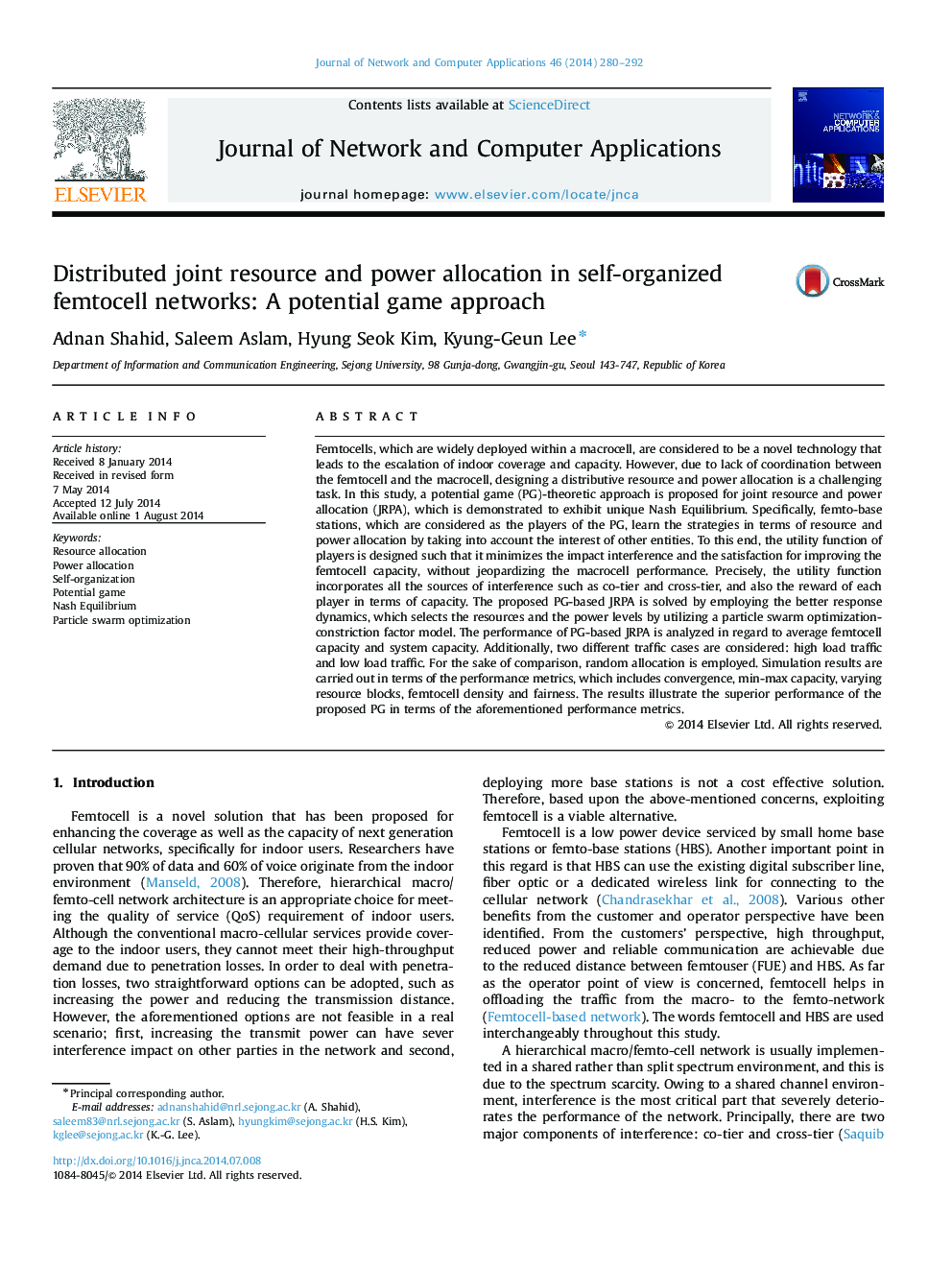| Article ID | Journal | Published Year | Pages | File Type |
|---|---|---|---|---|
| 457298 | Journal of Network and Computer Applications | 2014 | 13 Pages |
•Self-organized interference management for femtocell networks is investigated.•The potential game is employed for distributed joint resource and power allocation.•The utility and potential function is designed by considering other players.•The game is solved by using better response dynamics.•Performance is evaluated in terms of average femtocell and system capacity.
Femtocells, which are widely deployed within a macrocell, are considered to be a novel technology that leads to the escalation of indoor coverage and capacity. However, due to lack of coordination between the femtocell and the macrocell, designing a distributive resource and power allocation is a challenging task. In this study, a potential game (PG)-theoretic approach is proposed for joint resource and power allocation (JRPA), which is demonstrated to exhibit unique Nash Equilibrium. Specifically, femto-base stations, which are considered as the players of the PG, learn the strategies in terms of resource and power allocation by taking into account the interest of other entities. To this end, the utility function of players is designed such that it minimizes the impact interference and the satisfaction for improving the femtocell capacity, without jeopardizing the macrocell performance. Precisely, the utility function incorporates all the sources of interference such as co-tier and cross-tier, and also the reward of each player in terms of capacity. The proposed PG-based JRPA is solved by employing the better response dynamics, which selects the resources and the power levels by utilizing a particle swarm optimization-constriction factor model. The performance of PG-based JRPA is analyzed in regard to average femtocell capacity and system capacity. Additionally, two different traffic cases are considered: high load traffic and low load traffic. For the sake of comparison, random allocation is employed. Simulation results are carried out in terms of the performance metrics, which includes convergence, min-max capacity, varying resource blocks, femtocell density and fairness. The results illustrate the superior performance of the proposed PG in terms of the aforementioned performance metrics.
Graphical abstractFigure optionsDownload full-size imageDownload as PowerPoint slide
